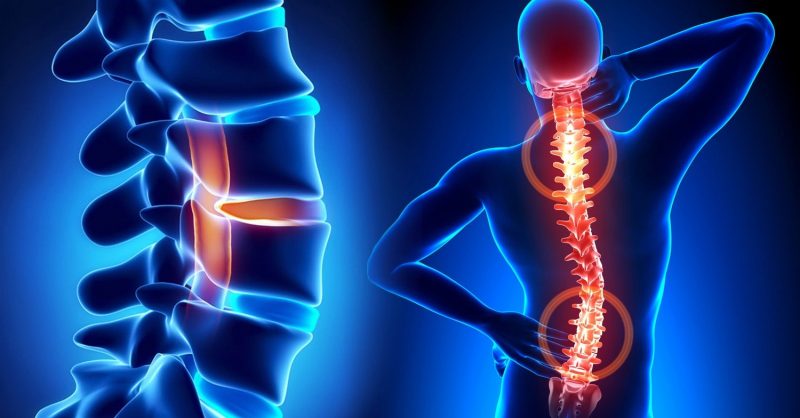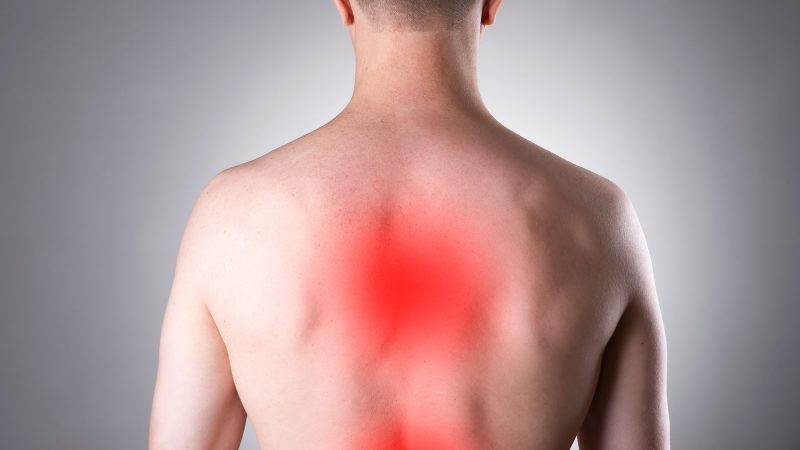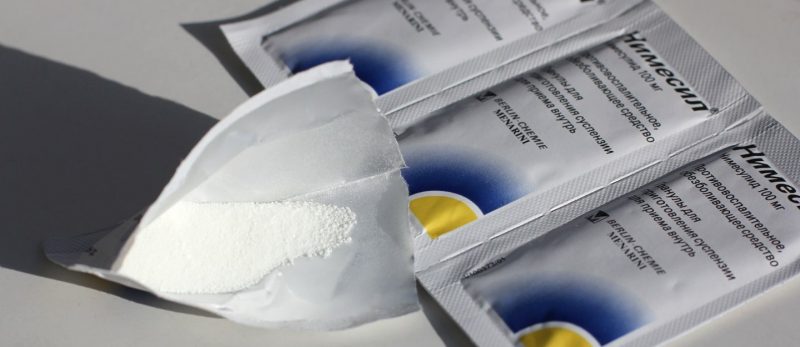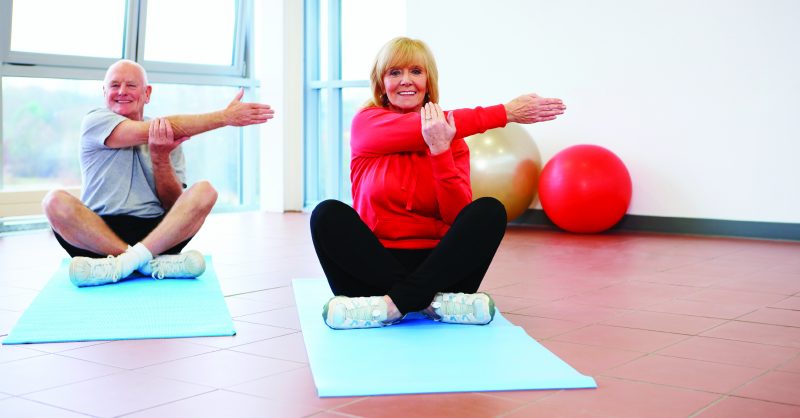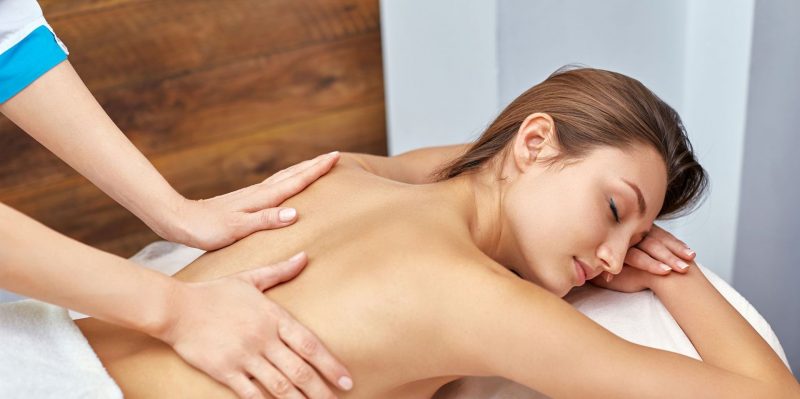Osteochondrosis is a serious disease that affects different parts of the spine. An ailment can provoke destruction of the joints in the patient, prolapse of the intervertebral discs, and the formation of hernias. That is why it is so important to know the signs of osteochondrosis.
Material Content:
Causes of osteochondrosis
According to statistics, 90% of people on the planet have objective prerequisites for the occurrence of such disorders. Especially brightly the disease began to manifest itself recently. A sedentary lifestyle, spending a long time at computers, phones and other gadgets, unbalanced food. All these reasons are fundamental in the development of processes unfavorable for the body.
Doctors say that the disease begins to actively progress in people after 30-35 years. By this age, the structure of the intervertebral discs and the vertebrae themselves, which are thinning, changes, a vascular bed appears between them. The slightest trauma or severe physical exertion can cause irreversible changes in the spine.
The main causes of osteochondrosis in men and women are as follows:
- Uneven load on the back. Many women like to carry a bag on one shoulder. Such a "harmless" habit in the future may result in serious problems with the spine.
- Incorrect sitting position. Teachers knowingly scolding children who are hunching at their desks. As a result, a violation of posture in childhood and adolescence (scoliosis).If you do not follow this from childhood, then an adult will be extremely problematic to correct something.
- Sleep on a soft bed. Experts recommend choosing and using only orthopedic mattresses. They are moderately tough, repeat the anatomical features of the body.
- Wearing the wrong shoes. High heels put a lot of stress on the spine.
- Sedentary lifestyle. Most often, the problem arises in people who spend most of their time in offices working at a computer, and thus are deprived of the possibility of active movement.
- Overweight.
- Chronic diseases These include diabetes, renal and hepatic insufficiency, flat feet, hypertension, and blockage of blood vessels.
- Strong physical activity. For example, many athletes often have problems with the thoracic and cervical spine.
- Hereditary factor. If parents had osteochondrosis in the family, in 70% of cases, similar problems threaten their children.
- Improper nutrition. Lack of basic micro and macro elements in products.
- Severe pregnancy. Women in this period are recommended to wear a special bandage that would unload the lumbar spine. The question is especially acute in cases of bearing two or more children.
- Bruises and injuries of the spine.
There are many reasons for the development of osteochondrosis. The task of everyone is to monitor the spine, once a year to undergo massage sessions. If the first signs of the onset of the process occur, consult a doctor immediately.
Symptoms and signs of the disease in women and men
Symptoms of osteochondrosis depend on the stage and type of the disease itself. Specialists distinguish cervical, thoracic, lumbar osteochondrosis. In many cases, patients do not even suspect that the problem lies in the spine. Often the pain is localized in other parts of the body.
The most common complaints for any osteochondrosis are as follows:
- Back pain (especially the area of the shoulder blades). The patient feels a burning sensation, sometimes an unpleasant tingling sensation.
- Severe dizziness and migraines.
- "Lump in the throat.
- An increase in body temperature (not higher than 38 degrees). This symptom can be observed in the acute stage of the disease.
- Numbness or tingling of limbs.
If this symptomatology is present, it is necessary to consult a neurologist. The specialist after a visual examination directs the patient for x-ray or tomography. Based on the data obtained, an accurate diagnosis is established, treatment is prescribed.
Cervical
Signs of cervical osteochondrosis in women and men are quite similar. According to doctors, the stronger sex is faced with this ailment much more often. The reason for this is great physical exertion.
More materials:cervical osteochondrosis: symptoms, treatment at home
What signs should alert:
- Headache. They are localized in the nape, temple, and temech. The pain is constant, aching in nature. At the same time, analgesics do not help, the patient's condition worsens every day, migraines occur, which can last up to several weeks.
- Numbness of the fingers. In the neck area the nerve endings and their processes are pinched. After the onset of this symptom, many patients turn to a cardiologist, suspecting heart problems. But osteochondrosis is to blame.
- Constant noise or ringing in the ears. If the disease progresses, then loss of consciousness may be observed.
- Visual impairment. It all starts with eye pain and photophobia.
- Increased blood pressure due to vasospasm.
- Swaying while walking. Many patients complain that they are being "drifted" to the side.
Osteochondrosis of the cervical spine is dangerous because other more serious diseases (neurasthenia, hypertension, loss of hearing and vision) can occur against its background. The cervical vertebrae are located close to the brain.If partial blockage of blood flow occurs, this immediately affects the general condition of the person.
Lumbar
Lumbar osteochondrosis is less common than cervical. In this case, the disease requires immediate treatment.
The disease affects the lumbar spine, also affects the pelvic organs. For men, this is fraught with impotence, women may have problems conceiving.
Symptoms are as follows:
- In the lumbar region there are constant pains arising from muscle tension.
- Numbness of the lower extremities, tingling of fingers, pain in the knee joint.
- Women often have varicose veins. A similar symptom occurs only in the advanced stage of osteochondrosis, when the disease affects the lumbosacral spine.
- Failure of the menstrual cycle.
- In men, there may be problems with the genitourinary system, which often leads to prostatitis.
It is quite difficult to independently detect lumbar osteochondrosis. There are no pronounced symptoms of this disease. As a rule, the problem is found only in acute form.
Thoracic Department
Such a pathology is extremely rare. This is due to the fact that this section of the spine does not have a large load, the weight is distributed evenly.
The first signs of breast osteochondrosis are not noticeable.
The disease proceeds at an initial stage asymptomatically, but in an acute form is manifested by the following symptoms:
- When bending, a sharp shooting pain in the back is felt.
- Difficulty breathing. Inhaling and exhaling causes a person great discomfort.
- Dizziness, often leading to migraines.
- "Formication.
- Pain in the heart.
If treatment is not started in time, the patient may develop angina pectoris and heart problems.
How to treat osteochondrosis at home
Treatment of osteochondrosis can be conservative and surgical. The second method is used in severe cases.
Drug treatment
After the diagnosis, the specialist prescribes a number of medications that greatly facilitate the patient’s condition:
- Anti-inflammatory drugs. They not only relieve swelling and inflammation, but also remove painful sensations. Effective Ibuprofen, Nimesil, Reopirin.
- Antispasmodics. They are able to quickly relieve an attack, reduce pain. Doctors distinguish “No-shpu”, “Sirdalud”.
- Preparations to strengthen the immune system. Intramuscular injections of ascorbic and thioctic acid are prescribed.
- Blood circulation improvers that promote oxygen saturation of cells. Among them, one can distinguish Trental, Actovegin.
- Preparations for strengthening cartilage and bone tissue. Demand is Piaskledin, Alflutop.
Drug treatment of osteochondrosis can be prescribed only by a specialist. Self-medication leads to severe complications and worsening of the patient's condition.
Folk remedies
Alternative methods for the treatment of osteochondrosis are used only in combination with medications, massage and gymnastics.
You can use tinctures from herbs: calendula, chamomile, sage, fir, birch and pine buds. Such decoctions should be taken orally or made from them compresses.
If there are no contraindications, you can apply blue or white clay, compresses with mustard to the affected area.
Using traditional medicine without the advice of a doctor is undesirable: the patient's condition can only worsen.
Gymnastics and physical education for osteochondrosis
Gymnastics and physical education will be effective only if they are performed regularly without interruption.
Specialists give the following tips:
- Before doing exercises at home, you need to take a course of exercise therapy. The specialist will not only tell, but also show how to properly perform certain movements;
- during the lesson there should be no crunch and pain;
- all exercises must be performed smoothly, daily increasing the load;
- if the patient's condition worsens, classes should be discontinued.
If osteochondrosis is detected, many experts recommend that the patient enroll in the pool. Swimming well stretches the spine. But active physical activity is prohibited. Pilates and yoga classes are recommended.
Massotherapy
Another good way to deal with osteochondrosis is to undergo a massage course. The procedure should be performed by a specialist. Before the start of the sessions, he is required to get acquainted with x-rays of the patient.
If the patient has high blood pressure, massage cannot be done.
Prevention
Is it possible to prevent the development of osteochondrosis?
Of course, the main thing is to fulfill the following recommendations of doctors:
- proper nutrition;
- physical education classes;
- massage of the cervical spine and back;
- visit to the pool;
- gym classes only with an experienced trainer;
- comfortable shoes at low speed;
- properly organized sleeping place.
Osteochondrosis is an unpleasant and insidious disease. If you do not start timely treatment, the patient will experience constant pain, deterioration of health. Compressed vertebrae and nerve endings can cause other, more serious ailments.
In today's article, we examined the initial signs and symptoms of osteochondrosis, treatment methods and prevention methods. We hope that this information will be useful to you, and there will be no problems with the spine.



